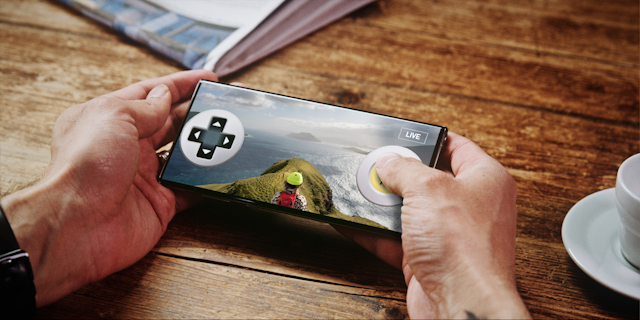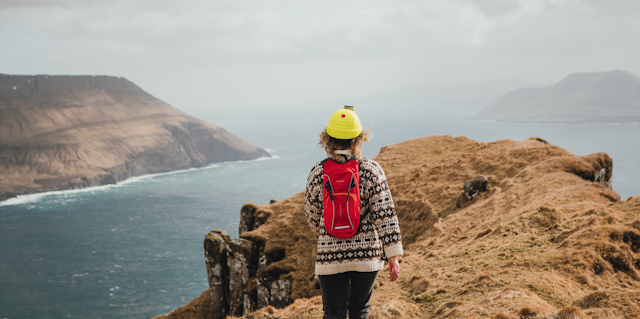
Advertisement

Visit Faroe Islands' 'Remote Tourism' is reaching millions on its shoestring budget
The past three years have seen Visit Faroe Islands scoop up a cabinet full of advertising awards. Its latest campaign, ‘Remote Tourism’, has reached millions worldwide despite barely spending a single Danish Kroner on paid advertising. So, who’s behind this budget-busting approach to destination marketing?
Somewhere on a rocky archipelago in the North Atlantic Ocean, someone is taking a walk around her island home. She abides by social distancing laws, although that’s hardly difficult in a territory with a population of 52,000. The difference between the walker and the rest of the isolating world is that thousands of people are tuning in to follow her daily exercise – as well as determining her route.
This strange set-up is, in fact, a campaign for Visit Faroe Islands, the destination marketing organization of the autonomous Danish territory located between Iceland, Scotland and Norway.
People from all over the world have been logging on to the dedicated microsite to watch the day’s local guide traverse the islands’ rugged coastlines, wide open plains and postcard perfect villages via a livestreaming camera attached to her hat. They can also join the queue to ‘remote control’ the explorer – commanding her with a virtual controller to run, jump, turn left or right, continue forwards or turn backwards.

As a piece of satisfyingly slow and escapist content, the work made headlines in papers across the globe. Yet the principle goal of ‘Remote Tourism’ wasn’t to cleverly market the Faroe Islands in the middle of a travel ban. Not quite, anyway.
Last year, the organization launched ‘Closed for Maintenance’ – an initiative that invited geographic volunteers to the islands for a working holiday. They had to pay for their flights and were expected to mend hiking paths and the like for much of the day, but were provided with food, basic accommodation and an archipelago completely free from other tourists in exchange for their time and labor.
The project was a success and had been due to take place again last week. Thousands of people applied for the 100 spots on offer.
“Unfortunately, because of the coronavirus, that project has been postponed until next year,” explains Bárður Eklund, the digital marketing manager at Visit Faroe Islands. “But that led to us thinking, ‘OK, what can we do now to help all those volunteers who are now prohibited from traveling? How can we give something back?’
“Of course, it is also nice in that it might raise awareness. Hopefully, once people are ready to travel again, they’ll remember us.”

This humble attitude is the Faroese way – approachable, down-to-earth, with what the BBC describes as a “deep desire to share information with one another”. It’s probably why resident Durita Dahl Andreassen didn’t lash out at Google when she discovered the islands weren’t accessible on Street View. Instead, she worked with Visit Faroe Islands to strap 360-degree cameras to a willing flock and create Sheep View – an irreverent campaign that won gold at Cannes Lions and ultimately led Google to map the territory.
And when the community realized the Faroese language wasn’t an option on Google Translate, no threats were made to their newfound friends in Silicon Valley. It again opted for a homegrown solution that doubled as a PR campaign: ‘Faroe Islands Translate’ saw Faroese speakers translate words and phrases through their smartphones in real time.
“Faroese people in general are not so outspoken,” says Eklund. “We keep it simple, open-minded, down to earth. And we try to reflect that in our campaigns and the way we talk on our platforms.”
If a pitch-perfect tone of voice is the secret behind Visit Faroe Islands’ success, then it probably helps that the marketing department is run by professional communicators who haven’t come up in the world of branding, consumer segmentation and behavioral data. Two of the five are former journalists; Eklund himself worked as a photographer and photojournalist before training himself in digital and returning home to the Faroe Islands.

He and his modest team are supported by two advertising agencies – the Sansir in the Faroe Islands and the Mensch in Denmark (the company previously worked with LiquidMinds). But while the team is sharp the budget is tiny: less than £1.8m ($2.2m) covers staff costs, creative and owned media. Eklund reckons the destination marketing budget of neighboring Iceland is roughly 10 times greater.
“We see some other countries ... making films with the story of ‘this is a great destination – come and visit us once you can’,” he says. “We cannot make those movies and push through those channels – we don't have those budgets.
“When people can travel again, all the tourist organizations are going to try and yell the loudest with fancy billboards and TV commercials. We can never compete with them. We have to think differently.”
Visit Faroe Islands doesn’t have a post-lockdown campaign locked in yet. But its creative process will remain the same as its straightforward pre-Covid strategy: “do something within our budget and make it so cool that other people will write about it without us asking them to write about it”.
And it’s highly unlikely that will involve Eklund and his Faroese crew yelling the loudest.